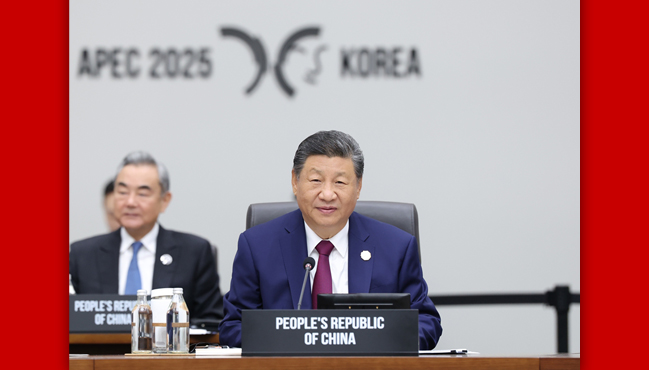
站内搜索
|
I. The manifestation of cognitive bias in the way Chinese and Westerners view the Tibet issue Cognitive bias is manifested mainly in three areas : 1. The sovereignty issue. Tibet is a part of China and involves China’s core interests. The international community long ago acknowledged this. In the past only India and Great Britain were vague on this matter. Great Britain in particular for a long time maintained that China merely exercised suzerainty over Tibet. It was only in October 2008 that British Foreign Secretary David Miliband issued a statement clearly acknowledging that Tibet is a part of the People’s Republic of China and that Great Britain’s past policy was a “mistake of the times.” However, the academic, popular and media attitude is quite different. For the most part, it accords with the Dalai Lama’s position that “Tibet is an independent country that was occupied by the Chinese Communist regime after 1950.” 2. The human rights issue. In recent years the basic position of Western governments has been to “openly admit that Tibet is a part of China while at the same time showing concern for the human rights situation in Tibet.” The Chinese people’s understanding of the situation is that for a long time before the democratic reforms in Tibet in 1959, Tibet practiced a feudal serf system in which politics and religion were intertwined. At that time, 95% of the people were serfs who had no means of production or personal freedom. After the democratic reforms, millions of serfs genuinely took control of their lives and became masters of the country. However, Western politicians and the Western public have for a long time badgered China about human rights in Tibet and have held two prominent misconceptions: first, that under the rule of the Dalai Lama Tibet was a Shangri La of devout religious believers who lived in a harmonious and peaceful society; and second, that after the communist Chinese regime took control of Tibet, the human rights situation there worsened and the native language, culture and religious belief were suppressed and still are. 3. The Dalai Lama issue. Since 1995, the Chinese government has clearly pointed out that the Dalai Lama is the head of a separatist political clique plotting “Tibetan independence,” the obedient tool of foreign anti-Chinese forces, the source of social unrest in Tibet, and the greatest obstacle blocking the orderly development of Tibetan traditional Buddhism, and he has long since lost the right to represent Tibet and the Tibetan people. However, Westerners generally believe that the Dalai Lama is benevolent, nonviolent and wise, and a world religious leader, and that if only China negotiates with this person who all Tibetans trust and who represents the interests of the Tibetan people, the “Tibet issue” can be fundamentally solved.
II. The intellectual and cultural background of these sharp cognitive differences Why are there such sharp cognitive differences in Chinese and Western views on the Tibet issue? The most important and central reason is that the West with the United States in the lead use the Tibet issue as a means to vilify and contain China. In addition, for several decades the Dalai Lama clique has carried out hate education among the Tibetan diaspora and spread deceitful propaganda throughout the world. There is broad consensus on these two points. Here I will focus on an exploration of the intellectual and cultural background of these cognitive differences. I personally believe that there are several important intellectual and cultural aspects of Western thinking that have a large impact on how Westerners view the Tibet issue. 1. Western nation-state theory. For a long period in Western history, especially European history, it was normal for government to be decentralized and for city states and feudal territories to be self-ruling. After the bourgeois revolution, nation-states arose, and countries that included more than one nation typically adopted some measures for self-rule and national self-determination. It is considered normal for a country to be split up into a number of smaller countries, so many Westerners think that Tibetans have the right to choose whether they want to remain part of China or to split from it. However, in the minds of the Chinese people, China was created by the common efforts of many nationalities and China has a pattern of diversity within unity. In addition the Chinese have a powerful conception of great unification, and the invasion of China in its modern history by Western countries led them to value state and national unity above all else. They absolutely will not let Tibet go. 2. Suzerainty theory. In the eyes of Western scholars and ordinary people, China has been an imperial country throughout its history, and it was a typical empire particularly in the Yuan and Qing dynasties, similar to the Ottoman Empire and Czarist Russia, that is, an empire built on military might and the suppression of native populations. Hence, these Westerners are willing to view China as a patchwork made up of Manchuria, Mongolia, Tibet, East Turkistan and the Chinese central plains. So they think that throughout history China only exercised suzerainty over Tibet, and the dissolution of empires in modern times is an inevitable consequence of social development. Moreover, after World War II, China’s sovereignty over Tibet was widely recognized in the international community because it was set forth in the Yelta system for the post-war international political world order, and its reality is the result of the occupation of the Chinese Communist regime. With this view of things, many Westerners not only view the Dalai Lama’s proposal to negotiate with the Chinese government to achieve “a high degree of autonomy” for Tibet as being in accord with their historical recollections of suzerainty, but also a major concession and a wise move that would enable the benevolent Dalai Lama to diminish the suffering of the Tibetan people. 3. The Orientalism tradition. Orientalism in essence is an attitude of Westerners to consider a different culture as the object of observation and research, and in addition to use their own logic to reconstruct the other culture. The most prominent manifestation of Orientalism in the Tibet issue is imagine that the old Tibet was peaceful and free, without class distinctions, without rich and poor, and a non-materialistic land of purity. According to research by Chinese scholars the Dalai Lama is working hard and cleverly to “orientalize” himself so that Westerners unquestioningly accept this idealization of Tibet, and he is also tampering with Tibetan traditions to cater to their preconceptions and hopes. No matter how little they actually know about the real situation in Tibet, Tibet is the greatest love in their hearts, and Tibet involves all the most important topics in the world today, such as human rights, universal brotherhood, peace, environmental protection, nonviolence, preserving cultural traditions, the equality between men and women, religious freedom, ethnicity and cultural self-determination. In the minds of many Westerners the Tibet issue is a position issue, and your position on it shows whether you are politically correct or not and whether you are a progressive and enlightened person. In this kind of situation, it doesn’t matter how much we trumpet the great achievements that have been made in Tibet’s modernization and development or strongly criticize the wild ambition of the Dalai Lama and his followers to split China, nothing we say to the Western audience will be understood or supported anymore than talking to a wall because it runs contrary to the flow of Western discourse on Tibet.
III. Two Revelations 1. We need to fully appreciate the duration and complexity of the Tibet issue. These differences in intellectual and cultural background provide the cultural, moral and public opinion foundations upon which Western politicians make their political calculations and are the source of deep-rooted biases the Western public, media and politicians have on the Tibet issue. These biases will not quickly disappear as China’s national strength increases and its relations with the West improve. At present, Western countries are becoming more determined to prevent and curb China’s rise. They are not only afraid that China’s economic and military power will grow, but are also afraid of the Chinese model of success. This model includes the Chinese people’s conception of the world and its wisdom and methods for solving ethnic and religious problems. From this perspective, some Westerners are unwilling for China’s method of ruling Tibet to find favor in the world. Experts pointed out long ago that viewing China’s sovereignty over Tibet from the perspective of Western theory of nationalism has latent uncertainty. An integral factor of sovereignty is international political recognition, but in the present international environment, the politics of recognizing sovereignty is never stable and unchanging. Western countries originally recognized the sovereignty of Yugoslavia on the basis of international law, but as the situation changed, they quickly broke the rules of international law and dismembered it without any qualms. In light of this, we should not put much stock in the fact that other countries recognize that Tibet is a part of China and that they have not established official relations with the “Tibetan government in exile” .Whether they recognize it or not, Tibet is a part of China and will constantly develop. Even though they recognize Tibet is part of China, Western countries have not diminished their support for the Dalai Lama’s clique. We cannot exclude the possibility that if the situation changes Western countries might renounce their so-called promises concerning the Tibet issue in the blink of an eye. On this matter, we absolutely cannot harbor any illusions. 2. We should comprehensively increase academic, intellectual and cultural exchanges. At present, there is already some reflection and criticism in the international academic world of the limitations and falseness of the Orientalist approach to research on China and the Tibet issue. We should take a more open and confident attitude in increasing international exchanges and expanding this kind of voice, and further influence international public opinion and the Western public and media. We especially should increase international exchanges in Tibetan studies, play the role of providing balance and guidance to the world of Tibetan studies to reverse the international community’s misreading of Tibetan history, cultural and current affairs as in the case when they see it as Shangri La or view it with a colonialist state of mind. We should also extend academic exchanges on Tibet to more disciplines and areas, such as international law and comparative culture research, get Western Chinese scholars interested in topics concerning Tibet, and get foreign historians to understand and recognize manifestations of diversity and unity, great unification and the system of autonomous ethnic regions in Chinese history. In this way we can decrease cognitive bias on the Tibet issue by increasing overall understanding of China. (孙显辉 译)
|
相关新闻
中国日报英文版两岸频道 | 中国日报中文版两岸频道 | 湖南中国和平统一促进会 | 广西中国和平统一促进会 | 江西中国和平统一促进会 | 中国政府网 | 中共中央统一战线工作部 | 国务院台湾事务办公室 | 外交部 | 人民政协网 | 黄埔军校同学会 | 全国台联 | 中国侨联 | 台盟 | 新华网 | 人民网 | 中新网 | 中央电视台 | 中央人民广播电台 | 国际在线 |

地址(ADD):北京市丰台区南三环中路赵公口小区20号
邮编(PostCode):100075 电话(TEl):86-10-58336312
京ICP备19039447号-1 中国和平统一促进会版权所有
 请关注微信公众号
请关注微信公众号





